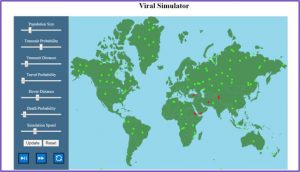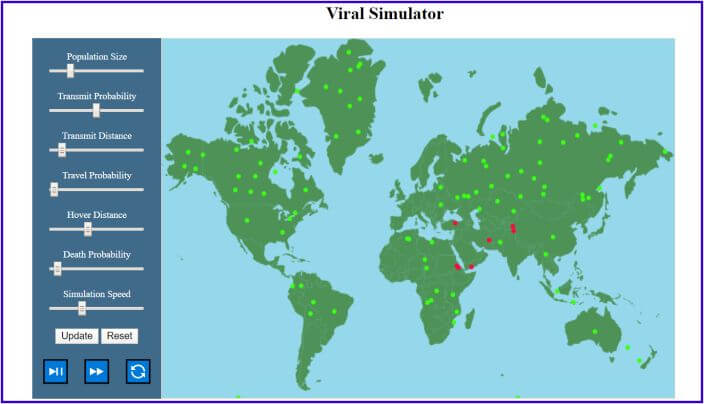While all early cases of Covid-19 in India were related to those with travel history to affected countries, reports of newer cases where there has been no travel history are putting the spotlight on community transmission. A simulated study by International Institute of Information Technology, Hyderabad (IIITH) underscores the need to reduce physical movement or social distancing to slow the spread of viral infection.
An experimental simulation developed by Prof. Vikram Pudi, Data Sciences and Analytics Center at IIITH has shown various possible scenarios of infection transmission across the world. The ‘viral spread simulator’ captures the effect of people’s movements on the spread of the virus. The movement could either be local, that is within neighbourhoods or it could be distance travel, that is to other locations, within and outside the country. The study highlights the fact that when people move about more, the spread of infection is faster.
Variables Studied
The experiment tested variables such as different population sizes of the world, the hover-distance or localized movement within a neighbourhood, travel probability (to different parts of the world), death probability, transmit probability (probability that infection transmits upon contact), transmit distance (distance within which the infection can transmit), and duration of the infection (pegged at 15 days in the experiment).
While infection spreads faster and across continents as seen from the Covid-19 outbreak across the world, the study reports that in real-life, the number of people who travel abroad is much less than those who don’t travel. With community transmission of the infection being the current threat in India, the professor emphasises that the high hover distance is the most important parameter that was studied. “When population is high, infection can spread more easily. While there is nothing much we can do about the population of our neighbourhood, we can easily change how much we move around. Seeing how much this impacts the spread of infection, hopefully will inspire us to restrict our movement,” says Prof. Pudi.

Seeing Is Believing
While there is no real life data involved, the tool enables one to experiment with the different parameters to visually see their effects worldwide. The purpose of simulation is to see the impact of strategies that governments can implement on containing the virus. Acknowledging that it was challenging to develop the simulator in such a short time, Prof. Pudi says that it is a highly optimized code that can run on any android device. “There is no server in the backend and it runs directly on the browser. Because of that it is highly scalable and will not slow down even if lakhs of people are viewing it at the same time. It has multi-lingual support and currently displays in Hindi, Telugu or English, based on the settings in one’s browser / mobile.”

Calling the simulator a basic version with scope to build on and improve further, the professor says actual data from various websites such as the WHO Covid-19 dashboard, the John Hopkins Covid-19 dashboard and others could be included in the next version. Dismissing apprehensions of a bleak scenario, Prof. Pudi says,”I was hoping that it would be a positive message to show that if people don’t move around quite a lot, we can contain the virus.”
To view the simulator, click here.

Sarita Chebbi is a compulsive early riser. Devourer of all news. Kettlebell enthusiast. Nit-picker of the written word especially when it’s not her own.


Next post